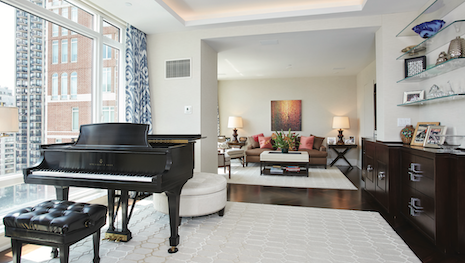- About
- Subscribe Now
- New York,
April 2, 2019

 The Manhattan real estate market continues to struggle. Image credit: Stribling & Associates
The Manhattan real estate market continues to struggle. Image credit: Stribling & Associates
Sales of luxury homes in New York’s Manhattan borough fell for the sixth straight quarter, as the area’s high-end real estate market continues to slow.
While the average and median sale prices in Manhattan increased 3 percent year-over-year, sellers are receiving an average of 9 percent less on their listing prices. Sales at expensive developments skew the numbers, according to the Stribling Q1 2019 Manhattan Market Report.
“The fall in home sales can largely be attributed to the slowdown that occurred throughout 2018, when fewer contracts were signed and mortgage rates were still rising, with an expectation they would continue to do so in 2019,” said Garrett Derderian, chief data office at Stribling & Associates, New York. “There is also a concern over the amount of supply on the market, as well as new supply that will be coming to market.
“The market remains soft for properties priced above $3 million,” he said.
City cooldown
Year over year, sales of homes in Manhattan fell 11 percent to 1,821 in the first quarter of 2019. At the end of the quarter, more than 7,300 homes remained on the market.
While 27 percent of Manhattan’s inventory was priced at $3 million or above, only 16 percent of closings reached that threshold.
Homes in Manhattan sold for an average of about $2 million. Image credit: Stribling & Associates
The average sales price was $2.06 million, up 3.7 percent from the first quarter of 2018. The median sales price was $1.14 million, an increase of 3.2 percent year-over-year.
However, those figures include a record sale of a $238 million penthouse at 220 Central Park South. A better indicator of the market is the average price per square foot falling 3 percent year-over-year to $1,438.
Almost four in 10 of the homes on the market in the first quarter of 2019 were priced between $1 and $3 million.
Although the market’s average discount from the initial listing price was 9 percent, price brackets above $1 million averaged double-digit discounts. On average, home sales of more than $20 million were discounted by more than 27 percent.
Homes spent an average of 161 days on the market, up more than 50 percent from the same period of 2018. Fifty-two percent of the properties priced at $10 million and above spent at least 180 days on the market.
Downtown Manhattan had the strongest seller’s market. Image credit: Stribling & Associates
More than a quarter of the properties sold in the first quarter were in downtown Manhattan. These homes also sold the fastest, with 31 percent sold within the first 60 days, and were the most expensive with a price per square foot of $1,809.
“Properties that price too aggressively will continue to linger on the market,” Mr. Derderian said. “Across the city and price points, it is a strong buyer’s market.”
Changing rates and taxes
Although the luxury real estate market in Manhattan has faced struggles in recent months, changes in interest and mortgage rates also impacted home sales.
As of January 2019, the current fixed-rate for a 30-year mortgage was 4.51 percent. Historically, mortgage rates above 5.5 percent greatly impact purchasing power.
According to Zillow’s Q4 Home Price Expectations Survey, 49 percent of industry experts expect activity among repeat buyers will hold steady in 2019, while 41 percent expect first-time homebuyers to become more active. Diverse metro areas are expected to have a strong year as well (see story).
The Federal Reserve also raised interest rates four times in 2018, most recently in December. Raising rates is usually seen as sign of confidence in a strong economy, though many have argued that interest rates are increasing too quickly (see story).
“While this sudden change [in interest rates] can certainly cause uncertainty in the economy as a whole, it also has caused mortgage rates to drop significantly,” Stribling’s Mr. Derderian said. “In the housing market, this proved to be a positive change, as we saw a slight increase in contracts signed from this time last year, although the increases were not spread evenly across all price points.
“Buyers in the lower brackets tend to be more price sensitive, and lower mortgage rates made a big impact,” he said.
State lawmakers also considered a tax on wealthy non-residents who own luxury city apartments in an attempt to help offset the costs of repairing New York’s public transportation systems. Under a pied-à-terre tax, part-time New Yorkers would likely be required to pay surcharges on residential properties valued at more than $5 million (see story).
“The budget was passed without the tax, but it did include a new update to the current 1 percent mansion tax on all home sales above $1 million,” Mr. Derderian said. “The new tax, which is a progressive tax, tops out for properties $25 million and above.
“While no new tax on home sales is favorable to the industry, a one-time tax is more appealing and easily understood to both buyers and sellers,” he said. “The impact on home sales and prices will not be as extreme as a reoccurring pied-à-terre tax would have been if passed.”
Share your thoughts. Click here